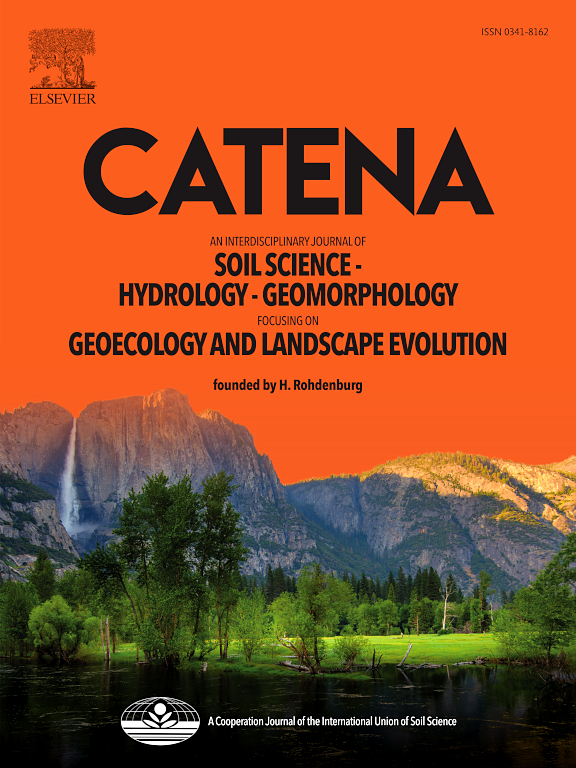Impact of farmland landscape characteristics on gully erosion in the black soil region of Northeast China
IF 5.4
1区 农林科学
Q1 GEOSCIENCES, MULTIDISCIPLINARY
引用次数: 0
Abstract
Gully erosion on agricultural land severely damages land resources and affects agricultural production. Topographic features, tillage methods, and roads are major elements constituting the farmland landscape, but the effect of their distribution in the farmland on the gully erosion is still unclear. This study examined the long-term impacts of changes in the farmland environment and climate change on gully erosion over a long temporal scale of nearly 60 years, the results showed that farmland reclamation over the past 60 years had led to a 2324.2 % increase in gully length density and a 3563.3 % increase in gully area density. The increase in annual rainfall amount and the frequency of extreme rainstorms had led to a rapid increase of gully erosion intensity in the last decade, with an average development rate in length density and area density of 61.5 m km−2 and 778.7 m2 km−2, respectively. Farmlands with slope aspects between 135 and 270° were more prone to gully erosion, which was related to the redistribution of snow on hillslopes caused by prevailing wind directions. Tillage methods and roads simultaneously affect gully erosion, with newly formed gullies located in farmlands and roadsides accounting for 63.0 % and 29.8 %. Gullies in regions where the angle between furrows and unpaved roads exceeded 70° accounted for 61.1 % of the total roadside gullies. Over the last decade, the annual average increase of gully length and area was 9.8 m yr-1 and 246.1 m2 yr-1. The development rate of gully area was significantly correlated with the drainage area.
求助全文
约1分钟内获得全文
求助全文
来源期刊

Catena
环境科学-地球科学综合
CiteScore
10.50
自引率
9.70%
发文量
816
审稿时长
54 days
期刊介绍:
Catena publishes papers describing original field and laboratory investigations and reviews on geoecology and landscape evolution with emphasis on interdisciplinary aspects of soil science, hydrology and geomorphology. It aims to disseminate new knowledge and foster better understanding of the physical environment, of evolutionary sequences that have resulted in past and current landscapes, and of the natural processes that are likely to determine the fate of our terrestrial environment.
Papers within any one of the above topics are welcome provided they are of sufficiently wide interest and relevance.
 求助内容:
求助内容: 应助结果提醒方式:
应助结果提醒方式:


